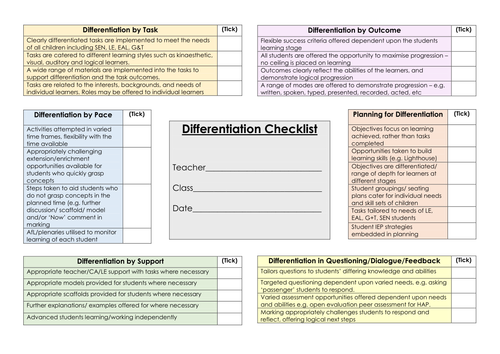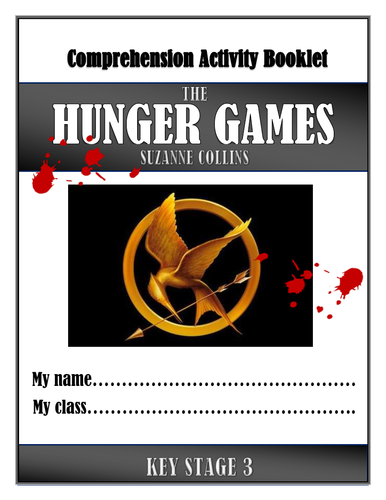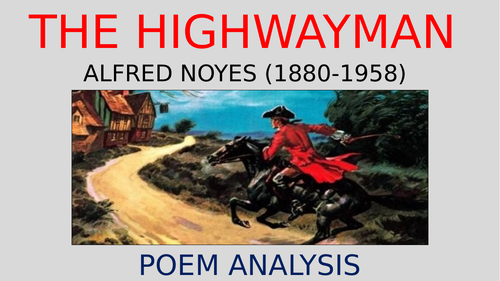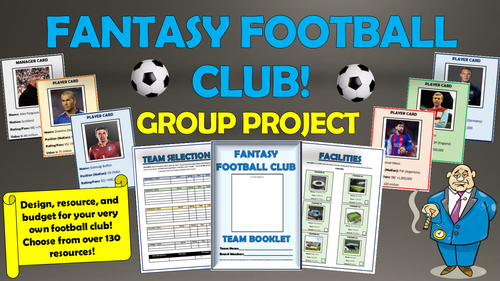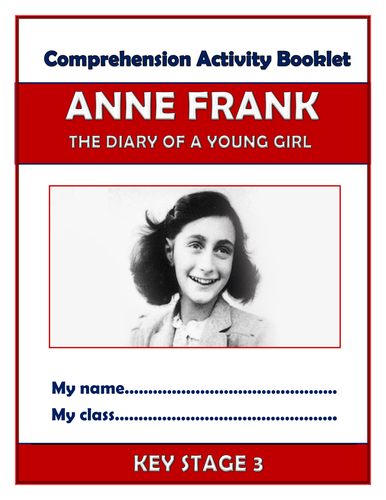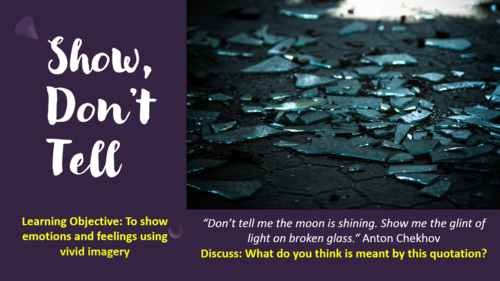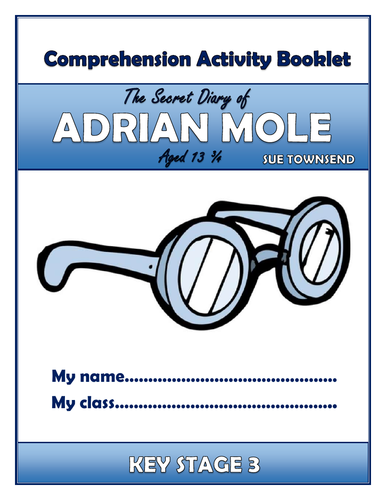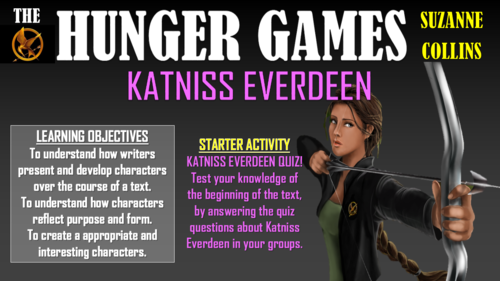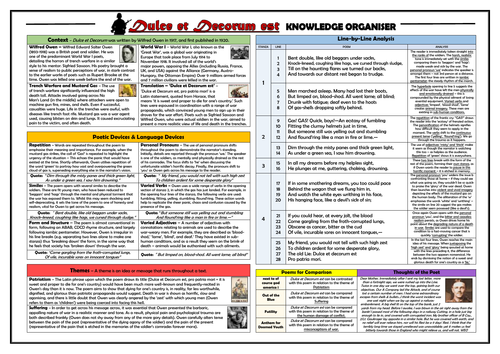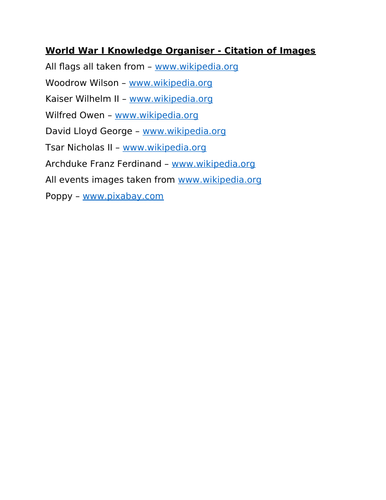
3k+Uploads
1900k+Views
2234k+Downloads
English language arts

War Horse KS3 Comprehension Activities Booklet!
This resource booklet contains a wide range of age-appropriate, engaging, and meaningful comprehension activities for use throughout the reading of Michael Morpugo’s ‘War Horse.’ Teachers have found them particularly useful in comprehension or guided reading sessions. They are perfect for aiding the progress of children towards meeting the KS3 expectations within the new National Curriculum framework. Children have found these resources extremely engaging, and for teachers there is explicit information within each task regarding which comprehension strands the task is designed to demonstrate. They also relate to key extracts, characters, and themes from the story, ensuring that children gain a deep understanding of the text.
Activities within the booklet include:
‘Context: World War I’ - to enable students to demonstrate that they can: ‘Know the purpose, audience and context of the writing and drawing on this knowledge to support comprehension.’
‘Morpugo’s Description’ - to enable students to demonstrate that they can: ‘Know how language, including figurative language, vocabulary choice, grammar, text structure and organisational features, present meaning.’
‘Captain Nicholls Character Profile’ - to enable students to demonstrate that they can: ‘Study setting, plot, and characterisation, and the effects of these.’
‘Vocabulary Inspector’ - to enable students to demonstrate that they can: ‘Learn new vocabulary, relating it explicitly to known vocabulary and understanding it with the help of context and dictionaries.’
Plus many, many more activities (the booklet is 23 pages in length!) I’ve also added it as a PDF in case the formatting differs on your computer.
All images are licensed for commercial use, and are cited on a separate document (included).
Bundle Sale

Pride and Prejudice Huge Bundle!
THIS BUNDLE CONTAINS ALL OF THE PRIDE AND PREJUDICE LESSONS, IN ADDITION TO THE COMPREHENSION ACTIVITY BOOKLET, THE KNOWLEDGE ORGANISER AND THE POINTLESS GAME!
This engaging, varied, and informative scheme of learning is designed to help students gain understanding, assessment skills, and key interpretations of Jane Austen’s ‘Pride and Prejudice.’ Made up of a wide-range of interesting and exciting lessons, students should complete this scheme having gathered vital skills in: interpreting the significant meanings of the text, understanding the writer’s ideas within the text, analysing key characters, settings, and themes, and understanding Austen’s use of language.
Stimulating, visual, and easily adaptable, these lessons provide suggested learning objectives and outcomes for students of a wide-range of abilities - The vast majority of tasks are differentiated to allow for different abilities and needs in your classroom. Each lesson loosely follows this logical learning journey to ensure that students learn in bite-size steps:
- Engaging
- Defining/ Understanding
- Identifying/Remembering
- Analysing/ Creating
- Peer or self evaluating.
All of the lessons are interactive, employ a variety of different teaching and learning methods and styles, and are visually-engaging. Whole-lesson PowerPoints, activity resources, worksheets, and lesson plans are all provided.

Pigeon English - Comprehension Activities Booklet!
This resource booklet contains a wide range of age-appropriate, engaging, and meaningful comprehension activities for use throughout the reading of Stephen Kelman’s ‘Pigeon English.’ Teachers have found them particularly useful in exam revision, comprehension tasks, or guided reading sessions.
They are perfect for aiding the progress of students towards meeting the KS4 expectations within the National Curriculum framework - this makes the tasks suitable for all examining bodies. Students have found these resources extremely engaging, and for teachers there is explicit information within each task regarding which comprehension strands the task is designed to demonstrate.
They also relate to key extracts, characters, and themes from the story, ensuring that students gain a deep understanding of the text.
Activities within the booklet include:
'Context: Modern Britain - to aid students with ‘Drawing on knowledge of the purpose, audience and context of the writing, including its social, historical and cultural context and the literary tradition to which it belongs, to inform evaluation;’
‘Kelman’s Description’ - to aid students with ‘Analysing a writer’s choice of vocabulary, form, grammatical and structural features, and evaluating their effectiveness and impact;’
‘X-Fire’ and ‘Lydia’ Profiles - to aid students with ‘Seeking evidence in the text to support a point of view, including justifying inferences with evidence;’
‘Editing the Text’ - to aid students with ‘Making an informed personal response, recognising that other responses to a text are possible and evaluating these.’
Plus many, many more activities (the booklet is around 30 pages in length!) I’ve also added it as a PDF in case the formatting differs on your computer.
All images are licensed for commercial use, and are cited on a separate document (included).

The Abominables - Whole Class Reading Session!
This whole class reading session aims to develop children’s comprehension skills through a reading of the opening chapter of Eva Ibbotson’s ‘The Abominables.’
The resource pack includes the extract and all of the activities for the session, which the class are guided through via a comprehensive PowerPoint presentation. The reading is followed by a series of activities aiming to develop children’s retrieval, explanation, inference, prediction and summarising skills. It also contains a vocabulary check immediately after the extract is read to clarify any unfamiliar/ difficult language.
The tasks are comprised of quick-check questions, solo thinking, pair/ group discussions and deeper thinking activities.
The session is best suited for children in KS2. I originally used this with Year 4-5 children, although with minor adaptations it could feasibly be used with slightly younger and older year groups. The session is also suitable for home/ remote learning.

Dr Jekyll and Mr Hyde Knowledge Organiser/ Revision Mat!
This detailed and visually-appealing resource offers a complete reference point for students learning or revising Robert Louis Stevenson's 'Strange Case of Dr Jekyll and Mr Hyde.' It contains comprehensive sections on:
- Context;
- Chapter by Chapter Summary (with quotes);
- Main Characters;
- Themes;
- Stevenson's Language Devices;
- Gothic Features.
Key words and ideas are underlined for easy reference. The resource is designed to be printed onto A3, and is provided as both a PDF and a Word version (so that you can edit if you want to). All images used are licensed for commercial use and are cited on a separate document (included).

Learning Walk/ Teacher Development Checklists
These comprehensive checklists have been created to aid school leaders when performing learning walks with a particular focus e.g. questioning, differentiation, etc. Clearly structured and organised, they present a central idea surrounded by a breakdown of a number of its key components.
For the user, this layout provides a simple reference list of each of the desirable skills, categorised appropriately. The checklists also provide an alternative to regular feedback methods, which often focus too heavily on the standard or ‘judgement’, as opposed to being a developmental tool.
Alternatively, these are really handy for teachers looking to develop their practice in the key teaching areas listed below. Included in the pack are checklists for:
-Questioning
-Differentiation
-Utilising Resources (including support staff)
-Engagement
-Building Literacy Skills
-Planning and Expectations
-Building Learning Power
-A blank template for you to design your own based upon your own focus
Note: The checklists offer a range of desirable strategies that teachers should look to implement over time - it would be damaging to expect teachers to utilise each of these strategies in every lesson!
Many Thanks

The Hunger Games KS3 Comprehension Activities Booklet!
This resource booklet contains a wide range of age-appropriate, engaging, and meaningful comprehension activities for use throughout the reading of Suzanne Collins' 'The Hunger Games.' Teachers have found them particularly useful in comprehension or guided reading sessions. They are perfect for aiding the progress of children towards meeting the KS3 expectations within the new National Curriculum framework. Children have found these resources extremely engaging, and for teachers there is explicit information within each task regarding which comprehension strands the task is designed to demonstrate. They also relate to key extracts, characters, and themes from the story, ensuring that children gain a deep understanding of the text.
Activities within the booklet include:
- 'Links to the Historical Myth of Theseus and the Minotaur' - to enable students to demonstrate that they can: 'Know the purpose, audience and context of the writing and drawing on this knowledge to support comprehension.'
- 'Collins' Description' - to enable students to demonstrate that they can: 'Know how language, including figurative language, vocabulary choice, grammar, text structure and organisational features, present meaning.'
- 'President Snow' and 'Peeta Mellark' - to enable students to demonstrate that they can: 'Study setting, plot, and characterisation, and the effects of these.'
- 'Vocabulary Inspector' - to enable students to demonstrate that they can: 'Learn new vocabulary, relating it explicitly to known vocabulary and understanding it with the help of context and dictionaries.'
Plus many, many more activities (the booklet is over 20 pages in length!) I've also added it as a PDF in case the formatting differs on your computer.
All images are licensed for commercial use, and are cited on a separate document (included).

The Highwayman - Poem Analysis!
This comprehensive analysis enables students to understand the key content, language and structural features of Alfred Noyes’ poem ‘The Highwayman.’
The resources is comprised of a 24-slide PowerPoint presentation, which includes:
-Contextual Information: The Poet/ Writing the Poem/ Highwaymen
-Detailed Stanza-by-Stanza Analysis of the Poem
-Noyes Key Messages
-Questions for Further Consideration
Annnotations are colour-coded for ease of reference. The resource is tried and tested, and helps to ensure that students develop a well-rounded understanding of the poem and its meanings.
A PDF version of the resource is also included, to protect formatting in case of differences in software. All images are licensed for commercial use.

Fantasy Football Club Group Project!
A Russian billionaire, Asman Veryrich, has approached you about setting up a new football club!
This exciting, engaging investigation activity allows students to control the direction of their own learning, through speaking, listening, discussing, and reasoning. I initially created these resources to provide something interesting for the students to engage with for their English Speaking and Listening discussions, but it has since been used across Maths, Art and Design, and PSHE departments, as well as by form groups and holiday activity groups, to build teamwork and collaboration skills.
Students get involved in all of the fun aspects of designing and setting up a new football club, including selecting a team of players, a manager, a stadium, and a training ground. They also design the team's club badge and football kits. They also need to use their skills of literacy to read and understand key evidence, and skills of numeracy to ensure that they keep their expenses within budget! What is more, groups can compete against one another to create the most successful team in the league, as all of the resources that they choose can help them to acquire valuable league table points!
Included in this resource pack are:
- Full PowerPoint lesson talking students through the process;
- An 8 page team booklet, used to create their designs and calculate their budgets;
- A pack of 96 player cards and 12 manager cards to select from (a combination of new and classic footballers are included, to ensure that this will never be outdated);
- Budget and recording sheets to track their progress;
- An A3 football pitch to strategise and select their team.
Considering the time and effort that it took to create these resources, I think that they offer exceptional value. Whenever I have used this activity before, it has taken at least 3-4 lessons, including the introduction, design process, presentations, and evaluation. I originally have used this with mixed ability Year 9 and 10 groups, but colleagues have adapted it easily for students of all key stages.
All images have been cited at the end of the PowerPoint presentation and are licensed for commercial use.

Anne Frank - Diary of a Young Girl - KS3 Comprehension Activities Booklet!
This resource booklet contains a wide range of age-appropriate, engaging, and meaningful comprehension activities for use throughout the reading of Anne Frank's 'Diary of a Young Girl.' Teachers have found them particularly useful in comprehension or guided reading sessions. They are perfect for aiding the progress of children towards meeting the KS3 expectations within the new National Curriculum framework. Children have found these resources extremely engaging, and for teachers there is explicit information within each task regarding which comprehension strands the task is designed to demonstrate. They also relate to key extracts, characters, and themes from the story, ensuring that children gain a deep understanding of the text.
Activities within the booklet include:
- 'Context: The Holocaust' - to enable students to demonstrate that they can: 'Know the purpose, audience and context of the writing and drawing on this knowledge to support comprehension.'
- 'Anne's Description - The Annex' - to enable students to demonstrate that they can: 'Know how language, including figurative language, vocabulary choice, grammar, text structure and organisational features, present meaning.'
- 'Otto Frank and 'Peter van Daan' - to enable students to demonstrate that they can: 'Study setting, plot, and characterisation, and the effects of these.'
- 'Vocabulary Inspector' - to enable students to demonstrate that they can: 'Learn new vocabulary, relating it explicitly to known vocabulary and understanding it with the help of context and dictionaries.'
Plus many, many more activities (the booklet is 21 pages in length!) I've also added it as a PDF in case the formatting differs on your computer.
All images are licensed for commercial use, and are cited on a separate document (included).

Simple, Compound and Complex Sentences!
This detailed and engaging lesson enables students to gain an understanding of simple, compound and complex sentences, and to use a variation of sentence types in their own writing for clarity and effect.
Students learn through a number of fun and interactive tasks, which enable them to:
- Define and exemplify simple, compound, and complex sentences;
- Identify them in writing;
- Understand and analyse how different types of sentences can be used for clarity and effect;
- Create a written piece using a variety of sentence structures for clarity and effect;
- Evaluate their use of different sentence structures.
The resources include:
-Visually engaging and comprehensive whole-lesson presentation;
-Resources for the card-sorting activity;
-A model example and analysis worksheet;
-A success criteria;
-Step-by-step lesson plan.
All images are licensed for commercial use, and are cited on the final page of the slide.

Wonder - The Theme of Appearances!
This engaging and informative lesson enables students to understand the role that the theme of ‘appearances’ plays in R.J. Palacio’s Wonder. In particular, students consider how appearances impact upon our lives on a daily basis, learn more about TCS (the condition affecting the protagonist - Auggie), and link what they find out to information in the novel. They then communicate their own ideas on the subject of judging people based on appearances.
There is easily enough content for 2-3 lessons here, following a step-by-step learning journey. Children learn through:
-Comprehending how appearances influence our lives - touching on the ideas of representations and stereotyping;
-Learning about Treacher Collins Syndrome, through a short engaging video, and distilling key information;
-Hot-seating, demonstrating empathy for characters whose appearance is ‘different’;
-Linking what they have learnt to what is read in the opening pages of Wonder;
-Communicating their ideas about judging people based on their appearances, as a part of a well-structured debate;
-Peer assessing each other’s learning attempts.
Included is:
Whole lesson PowerPoint - colourful and comprehensive;
Research template;
Writing to Argue helpsheet;
Comprehensive lesson plan.
All resources are provided in Word (for easy editing) and PDF (to ensure formatting remains fixed between different computers). Word documents are in the zip file. There are also opportunities for group learning, speaking and listening, peer assessment, and whole class discussion. I originally used these resources with a year 6 class, however colleagues have used them for between years 5 and 8 with only minor adaptations.
All images are licensed for commercial use, and image rights are listed on the last page of the presentation.

Show, Don't Tell - Writing About Emotions!
This engaging and highly-purposeful lesson enables children to write about emotions and feelings using vivid imagery.
Children learn how to show, not tell in their writing, focusing on precise details relating the senses. This helps to make their writing more immersive - painting an image in the mind of the reader with their words.
Children learn through:
-Defining and understanding what is meant by showing, not telling;
-Considering how each of the major emotions/ feelings can be shown;
-Turning their ‘showing’ simple sentences into compound and complex sentences;
-Editing and enhancing their showing sentences through consideration of precise verbs, adverbs and the use of analogies.
Provided in this resource pack are:
-Colourful and comprehensive PowerPoint presentation, offering a step-by-step guide through the lesson;
-Showing Emotions table template;
-Showing Emotions helpsheet (for LAP students).
The worksheets/ templates are provided as Word (for ease of editing) and PDF (to prevent formatting issues between devices).
The lesson was originally created for children in upper KS2, however with minor adaptations could easily be suitable for those in lower KS2 or lower KS3.

The Magic Finger - Roald Dahl - KS1 Comprehension Activities Booklet!
This resource booklet contains a wide range of age-appropriate, engaging, and meaningful comprehension activities for use throughout the reading of Roald Dahl's 'The Magic Finger.' (Teachers have found them particularly useful in comprehension or guided reading sessions). They are perfect for aiding the progress of children towards meeting the KS1 expectations within the new National Curriculum framework. Children love learning from these resources, whilst they are also of great use to teachers, as there is explicit information within each task regarding which comprehension strands the task is designed to demonstrate. They also relate to key extracts, characters, and themes from the story, ensuring that children gain a deep understanding of the text.
Activities within the booklet include:
- 'Feed The Ducks' - to enable students to demonstrate that they can: 'talk about their favourite words and phrases in the story;'
- 'Dahl's Description' - to enable students to demonstrate that they can: 'Explain meanings of words that they know and ask the meaning of new words. Link the meaning of new words to words that they already know;'
- 'The Finger' - to enable students to demonstrate that they can: 'Say what might happen next in a story based on what has happened so far;'
- 'The Greggs' - to enable students to demonstrate that they can: 'Enjoy reading and discussing the order of events in books and how items of information are related.'
Plus many, many more activities (the booklet is around 20 pages in length!) I've also added it as a PDF in case the formatting differs on your computer.
All images are licensed for commercial use, and are cited on a separate document (included).

Revolting Rhymes Little Red Riding Hood and the Wolf - Whole Class Reading Session!
This whole class reading session aims to develop children’s fluency and comprehension skills through reading ‘Little Red Riding Hood and the Wolf’ from Roald Dahl’s Revolting Rhymes.’
The reading is followed by a series of activities aiming to develop children’s retrieval, explanation, inference, prediction and summarising skills. It also contains a vocabulary check immediately after the extract is read to clarify any unfamiliar/ difficult language.
The tasks are comprised of quick-check questions, solo thinking, pair/ group discussions and deeper thinking activities. The text is hyperlinked (first slide) for ease of access, and also provided as a PDF.
The session is best suited for children in years 2-4, although with minor adaptations it could feasibly be used with slightly younger and older year groups.

The Secret Diary of Adrian Mole Comprehension Activities Booklet!
This resource booklet contains a wide range of age-appropriate, engaging, and meaningful comprehension activities for use throughout the reading of Sue Townsend’s ‘The Secret Diary of Adrian Mole, Aged 13 3/4.’ Teachers have found them particularly useful in comprehension or guided reading sessions. They are perfect for aiding the progress of children towards meeting the KS3 expectations within the new National Curriculum framework. Children have found these resources extremely engaging, and for teachers there is explicit information within each task regarding which comprehension strands the task is designed to demonstrate. They also relate to key extracts, characters, and themes from the story, ensuring that children gain a deep understanding of the text.
Activities within the booklet include:
‘Context: 1980s Britain - to enable students to demonstrate that they can: ‘Know the purpose, audience and context of the writing and drawing on this knowledge to support comprehension.’
‘Townsend’s Language Devices’ - to enable students to demonstrate that they can: ‘Know how language, including figurative language, vocabulary choice, grammar, text structure and organisational features, present meaning.’
‘Bert Baxter Character Profile’ - to enable students to demonstrate that they can: ‘Study setting, plot, and characterisation, and the effects of these.’
‘Vocabulary Inspector’ - to enable students to demonstrate that they can: ‘Learn new vocabulary, relating it explicitly to known vocabulary and understanding it with the help of context and dictionaries.’
Plus many, many more activities (the booklet is 23 pages in length!) I’ve also added it as a PDF in case the formatting differs on your computer.
All images are licensed for commercial use, and are cited on a separate document (included).

The Hunger Games - Katniss Everdeen!
This engaging and informative lesson enables students to understand how the lead protagonist of Suzanne Collins’ ‘The Hunger Games’ – Katniss Everdeen - develops as a character throughout the novel. In doing so, students learn how she develops and acquires the key skills, characteristics, beliefs, and values to become the complete dystopian heroine.
The lesson follows a step-by-step learning journey, in which children learn through:
Comprehending how Katniss is initially introduced to the reader;
Reading extracts from Chapters 3, 7 and 14 of The Hunger Games, identifying how Katniss’ character develops;
Analysing how her character fits the role of the ‘Dystopian Hero/Heroine’, and matching her traits to the different features of this character form;
Applying their understanding by creating their own Dystopian Hero/Heroine;
Self assessing their learning attempts.
Included is:
Whole lesson PowerPoint - colourful and comprehensive;’
Extracts from The Hunger Games (from Chapters 3, 7, and 14);
Character Profile for Katniss Everdeen;
Blank Template for Creating a Dystopian Hero/Heroine;
A comprehensive lesson plan;
All resources are provided in Word (for easy editing) and PDF (to ensure formatting remains fixed between different computers).
There are also opportunities for group learning, speaking and listening, peer assessment, and whole class discussion. I originally used these resources with year 8 classes, however colleagues have used them for between years 5 and 10 with some adaptations.
All images are licensed for commercial use, and image rights are listed on the last page of the presentation.

Dulce et Decorum est Knowledge Organiser/ Revision Mat!
This detailed and visually-appealing resource offers a complete reference point for students learning or revising Wilfred Owen’s World War I poem 'Dulce et Decorum est.’ It contains comprehensive sections on:
Context;
Line-by-line analysis (with quotes);
Poetic Devices/ Language Devices;
Themes;
Form/Structure;
Poems for Comparison;
Thoughts of the Poet.
Key words and ideas are underlined for easy reference. The resource is designed to be printed onto A3, and is provided as both a PDF and a Word version (so that you can edit if you want to). All images used are licensed for commercial use and are cited on a separate document (included).

World War I Knowledge Organiser/ Revision Mat!
This detailed and visually-appealing resource offers a complete reference point for students learning or revising knowledge of World War I. It contains comprehensive sections on:
Major Events - dates, images, descriptions, and key facts;
Key People - Archduke Franz Ferdinand, David Lloyd George, Tsar Nicholas II, Woodrow Wilson, Kaiser Wilhelm II, Wilfred Owen;
Main Participating Countries - Flags, Year joined and death toll;
Timeline of Major Events.
Key words and ideas are underlined for easy reference. The resource is designed to be printed onto A3, and is provided as both a PDF and a Word version (so that you can edit if you want to). All images used are licensed for commercial use and are cited on a separate document (included).
Bundle Sale

The Curious Incident of the Dog in the Night-time - Big Bundle!
This resource bundle contains all of the ‘Curious Incident of the Dog in the Night-time’ lessons, the comprehension activities booklet and the knowledge organiser!
The engaging and thought-provoking series of lessons has been devised to provide students with a well-rounded, secure understanding of the text. The entire novel is broken down in to 7 double lesson packs, meaning that there is a total of 14 individual activity sets here.
The Opening Chapters (2-19);
Chapters 23 to 47
Chapters 53 to 83
Chapters 89 to 113
Chapters 127 to 157
Chapters 163 to 197
The End of the Novel (199 to 233).
The comprehensive and colourful PowerPoint presentations guide students through a wide range of activities, including those designed to enhance the following skills: retrieval, understanding vocabulary, inference, explanation, summarising, sequencing, analaysis and deeper thinking activities.
The resources are suitable for students in either KS3 or KS4, depending upon the individual context of the school and students.






